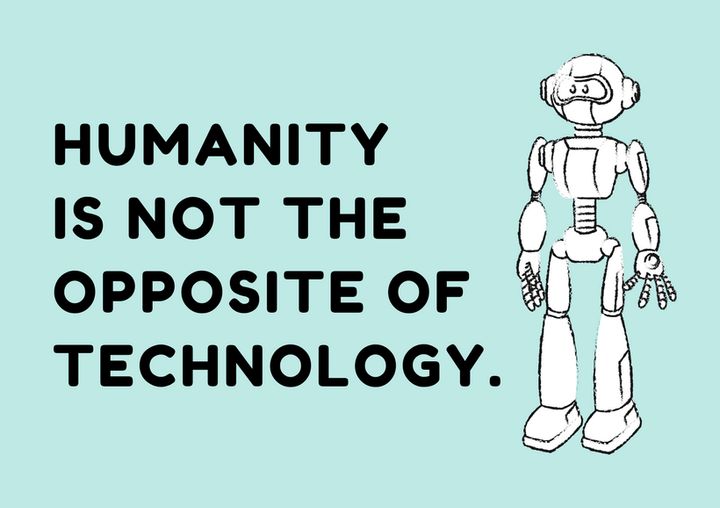As a digital marketing agency owner, I’ve been involved in the ongoing conversation about the role of artificial intelligence within our systems. One of the biggest and most obvious examples is Google, which has implemented AI into search and paid search marketing processes to improve efficiencies, help with campaign management, and get innovative products or services into the hands of consumers. In fact, AI is all over Google’s product roadmap for 2017.
There is tremendous value in artificial intelligence and AI-assisted services, and as the years go by we hear more and more reports—and even see evidence with our own eyes—that this is the way the world is going. But to some industries like coal mining and healthcare, the abundance of AI technology can be an intimidating or even worrisome prospect.
As AI becomes more socially and industrially acceptable, these industries and many others are predicted to be taken over by artificial intelligence. This may mean layoffs, and for many workers seasoned in these industries, it could mean new careers—and also uncertainty about the future.
But as the future moves closer to a world we’ve seemingly only glimpsed in films like “The Matrix” and “I, Robot”, we need to remember to stop ourselves. While a world in which artificial intelligence has surpassed human intelligence is great material for blockbuster films, it’s not the reality in which we live. Yes, artificial intelligence and AI-assisted services are almost indisputably the way the world is heading, but there is still no replacement for the human touch—at least not every aspect of it. And most likely, there never will be.
Even though AI is applicable in many industries, the human element will always be most critical. For example, in digital marketing, there is no comparison to the employee managing a paid search campaign. How could a robot create an influential ad campaign, write the creative copy, and build a landing page that converts as well as a talented human marketer informed by AI data points?
Digital marketing is not the only industry that depends on the human element to survive. For example, the customer service industry needs the human touch to make an impact on its customers and drive trust and brand loyalty.

Think about it: The last time you called your bank or cable provider, were you immediately connected with a human being? Or did you have to navigate a series of recordings by repeating “yes” and “no” before talking to someone real? Did you even talk to anyone at all? Thanks to the implementation of artificial intelligence in the customer service industry, this has unfortunately become an all-too-common experience.
However, some companies have recognized the need for human interaction and AI to operate side by side. Boomsourcing, a call center specialist offering a customer service solution in whatever accent or language is native to a company’s customer base, is helping their clients stay connected to their customers in a very effective way. According to their website, Boomsourcing has fostered genuine human connections via technology by generating over 100 million minutes of conversation for their customers.
Another industry dependent on the human element is the education industry. From preschool to graduate school, we depend on teachers and advisors to motivate, inspire, and mentor us. But as AI emerges as an industry disruptor, things are changing. Tools like digitized textbooks and interactive learning interfaces allow information to reach more students easily and more efficiently. It also does away with the “one-size-fits-all” approach to learning—and that’s a great thing. But will artificial intelligence ever fully replace a teacher, principal, or librarian?

The quick answer is no; artificial intelligence could never be a complete substitution for the compassion and encouragement students receive from instructors. The true key to success is combining human interaction and technology to reach students around the world, while still having a human instructor on the other end to offer a comprehensive educational experience. Afterall—would you take career advice from a robot?
Many companies out there recognize the need to embrace artificial intelligence while still keeping human interaction at the forefront. Success Path Education, a real-estate training program developed to teach individuals how to build a business around property and investment, uses human touch through their trainers and coaches to ensure student success.

But while technological advancements in education can already be seen with online classes, virtual seminars, and interactive discussion boards, it may be less obvious in the healthcare industry. The idea of medical diagnosis, treatment, and recovery being facilitated by artificial intelligence is mind-boggling. Who would trust the birth of their child with a robot doctor or midwife? No one—and they probably won’t have to.
Artificial intelligence has been incredibly useful in the medical industry. That’s because it’s not used as a replacement for years of medical school; it’s used as a supplemental tool to help medical staff perform their jobs better. It also enables doctors to take care of people around the world, especially in areas that are lacking proper medical care.
We need to have human doctors and nurses consulting our health needs, and when they’re equipped with artificial intelligence technology, they have the tools to revolutionize the way patients are cared for. Artificial intelligence enables medical professionals to do just that.
You don’t have to look too far to see the benefits AI can have on the medical industry. One company, Chartfast, has streamlined the medical records industry by combining technology and sincere human employees to streamline the delivery of medical records to patients and their health plans, making a frustrating process simple and easy.
Industries around the world are implementing artificial intelligence not only to improve business operations and increase sales, but to make people’s lives easier. And at its core, that’s what artificial intelligence does. It’s not here to take over jobs or eliminate the need for human life; it’s here to streamline the ways in which innovation across all industries can flourish.

With artificial intelligence, humanity is not the opposite of technology. When done right, AI is purely the merging of human compassion, experience, and skill with the limitless possibilities of technology. The human element will always be necessary to make truly genuine interpersonal connections, and it’s a critical aspect of how every industry should be doing business.
